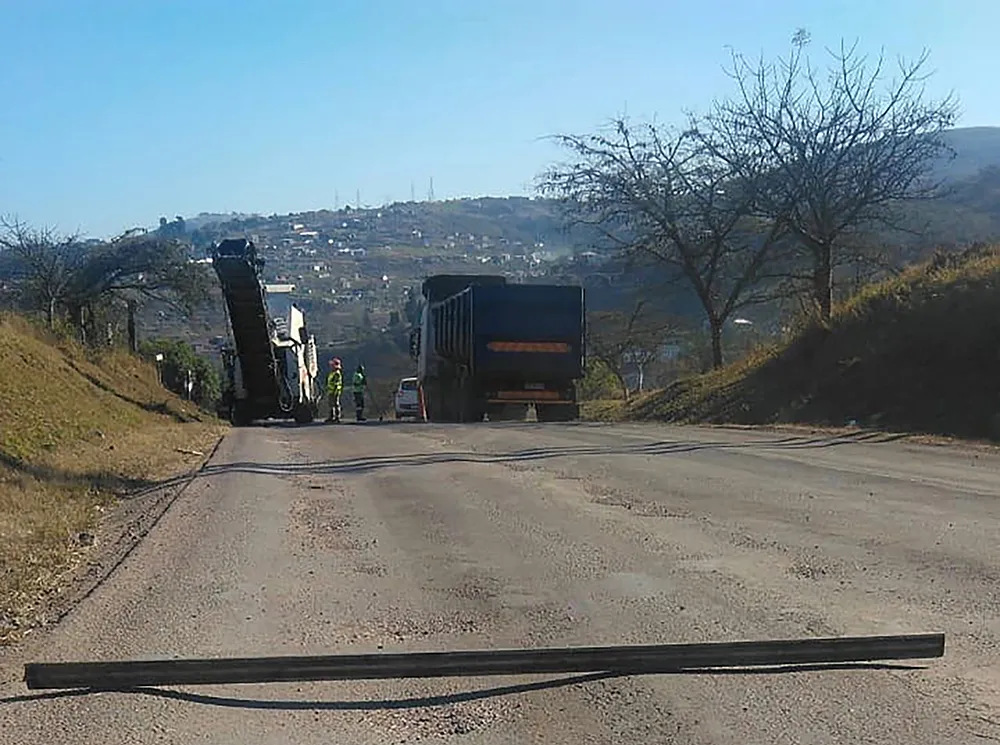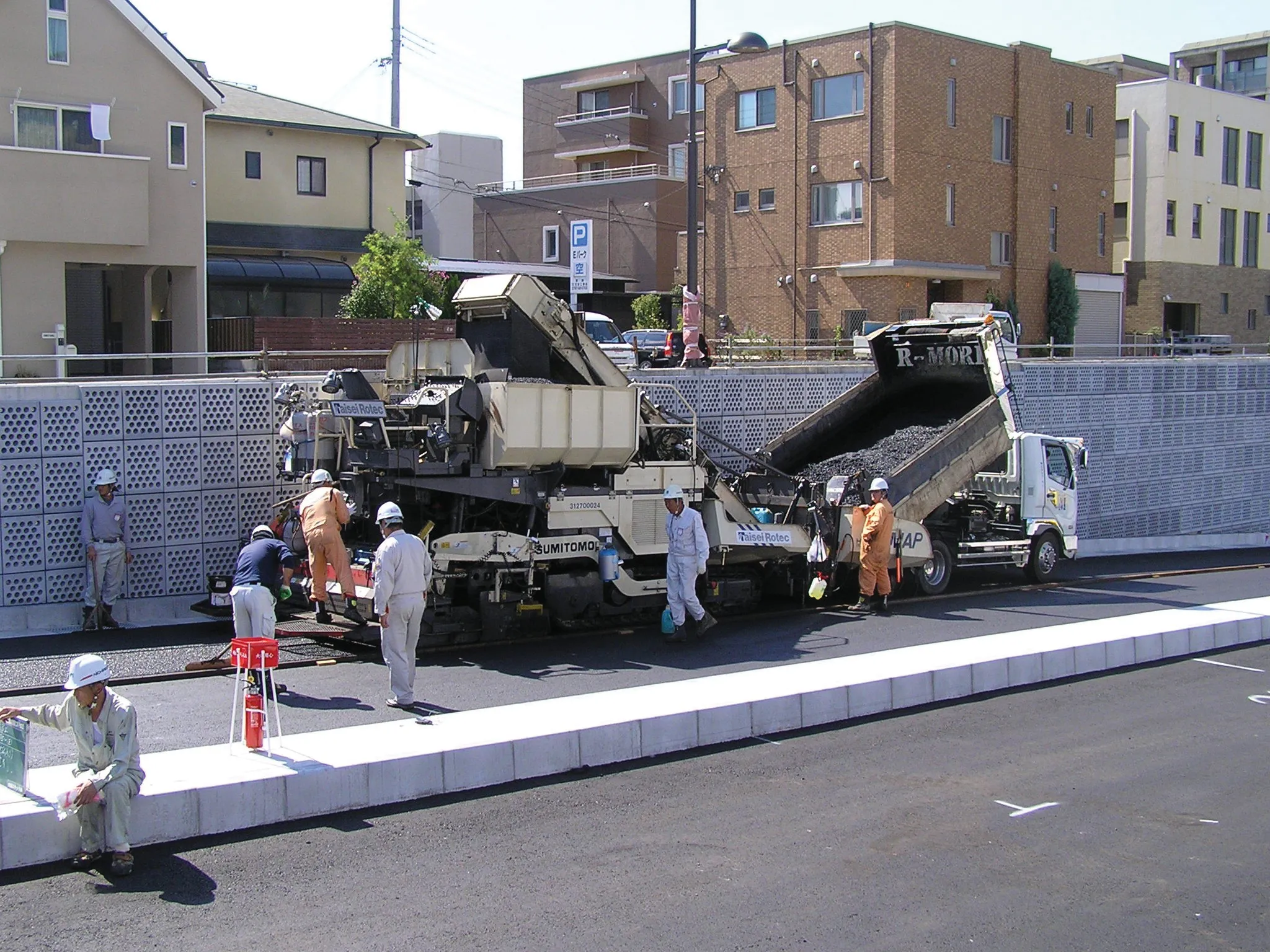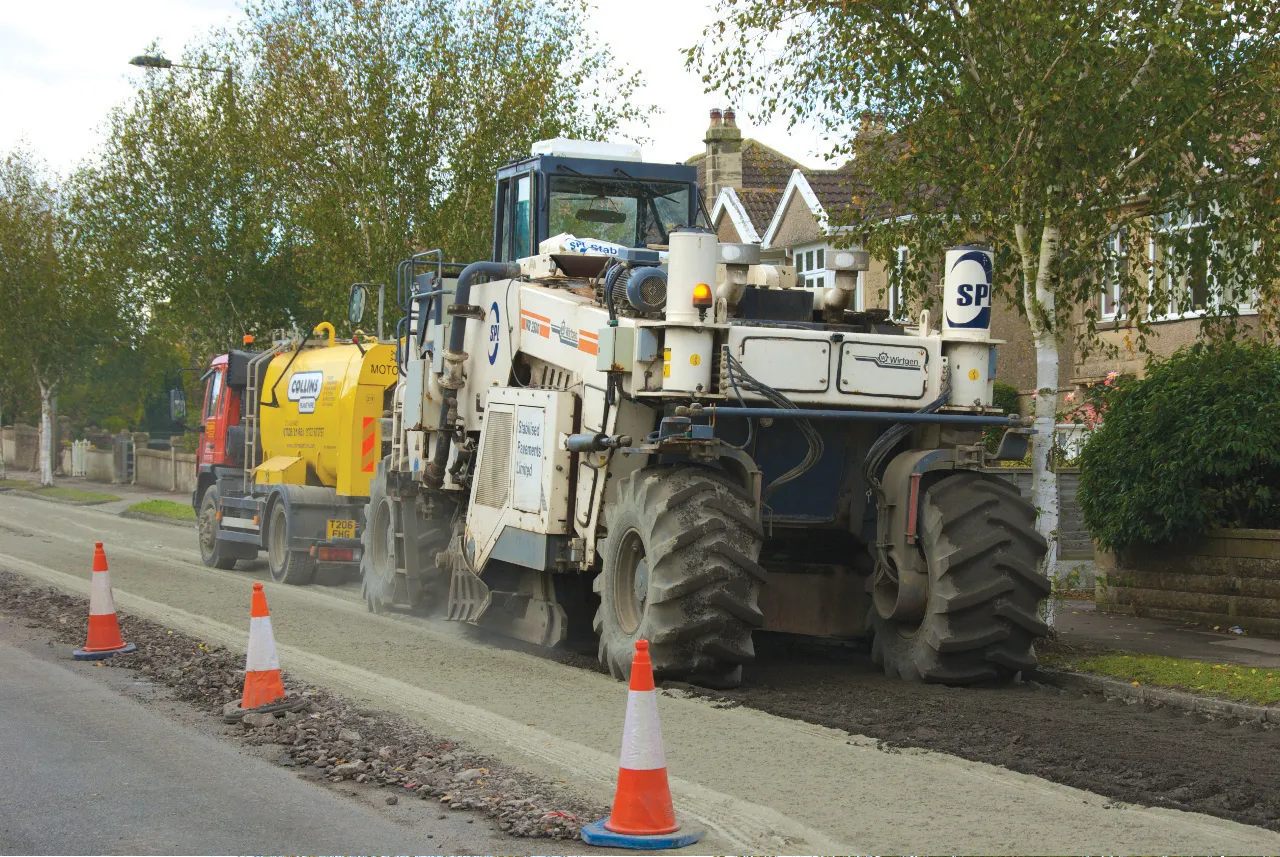
The introduction of recycled plastic waste into hot-mix asphalt for road surface applications is gaining traction in many countries - US, UK, India, Australia, New Zealand, Canada, Malaysia and China. From an environmental perspective it is obviously preferable to use recycled plastic in asphalt binders and mixtures compared to non-renewable resources. The benefits often stated include the conservation of natural resources, less energy consumption, reduced disposal of solid waste and lowered carbon dioxide (CO₂), sulphur dioxide (SO₂) and nitrogen oxide (NO) emissions.
South African contractor Shisalanga Construction carried out extensive research into assessing the properties of various types of waste plastic to find the most suitable type for use as a hot-mix asphalt modifier.
The preferred choice for this application was found to be recycled high-density polyethylene (rHDPE) derived from used milk containers, caps and packaging which is blended into penetration grade bitumen. In addition to performance enhancement, the use of rHDPE reduces the likelihood of fugitive and stack emissions; rHDPE (130oC) melts at much lower temperatures than polyethylene terephthalate (>250oC) and does not release toxins associated with polypropylene.
rHDPE modified binder
The rHDPE material is available in pelletised form. Using a 6% dosage rate of rHDPE in the bitumen binder it equates to approximately 118 two-litre milk bottles per tonne of asphalt.
Shisalanga Construction found the method of adding the rHDPE to the asphalt mix is crucial for ensuring an appropriate mixture. Two methods were researched. In the “dry” method the product is added to the heated aggregate before adding the bituminous binder. In the second method, the “wet” method, the polymer is digested into the hot bitumen.
The “wet” method was favoured as it is considered that the polymer would be more evenly distributed in the binder and, furthermore, the possibility of micro-plastics leaching from the asphalt mix is eliminated. An important conclusion, after exhaustive testing of both binder and mix performance characteristics, was that 70/100 penetration grade bitumen modified with 6% rHDPE (by mass of binder) produces a binder with a near-perfect visco-elastic behaviour. Its performance grading is PG70V-22 and its performance properties compare very well with those of ethyl-vinyl-acetate (EVA) and styrene-butadiene-styrene (SBS), while fitting into a higher temperature range.
Although the binder does not have any noticeable elastic recovery properties when tested using the ductility test, it shows very encouraging low-temperature characteristics when tested using the bending beam rheometer (BBR). The binder achieves a -22oC low-temperature performance grading value that would indicate high resistance to thermal cracking. It also achieves a high-temperature performance grading value of 70oC when tested with the dynamic shear rheometer (DSR).
The performance grading system used in South Africa takes traffic loading into account with the rHDPE modified binder falling into the “V” category. This denotes its suitability for use in asphalt mixes under very heavy traffic loading conditions. It should also be noted that the ageing ratio, which is a good indicator of fatigue resistance of the HDPE modified binder, is superior to that of other standard modified binders such as SBS modified binder.
Asphalt design
Asphalt mix designs using binder modified with 6% rHDPE focused on two stone-skeleton asphalt mix types; stone mastic asphalt (SMA) and Enrobe a Module Eleve (EME - high modulus asphalt). In order to compare asphalt performance properties of mixes manufactured using the rHDPE modified binder, further mix designs were carried out using SBS modified binder in the case of the SMA mix and 10/20 pen grade bitumen in the case of the EME mix.
Results of tests on the EME-type asphalt mixes showed comparable fatigue results for rHDPE and 10/20 pen binders. Meanwhile, the SMA, with its higher binder content and film thickness, achieved a far higher fatigue value. It was also found that the rHDPE modified binder tends to improve the compactability of the asphalt mixes. This results in lower void contents (VIM) at the same binder contents than either the SBS or 10/20 pen grade binders.
Performance
To assess performance characteristics, Shisalanga appointed VNA Consulting engineers to undertake field trials. Two trial sections of rHDPE modified asphalt were paved in August 2019 on a provincial road close to Shisalanga’s asphalt plant. The first consisted of a 40mm surfacing overlay of the SMA-type mix and the second used the EME mix. A fairly steep section with 8-9% gradient was purposely selected to assess the SMA mix’s ability to withstand traction and brake forces imposed by heavy vehicles leaving the asphalt plant and adjacent quarry.
A severely rutted section was selected for the second trial (see image) with areas exhibiting the most severe rutting being milled off before paving the 60mm-to-70mm EME-type mix. It was anticipated that some initial rutting would occur but that this would test whether the high-modulus asphalt could bridge the uneven surface and previously distressed pavement. This trial section was also intended to verify the low-temperature crack resistance of the modified mix. To do this, one of the lanes was paved a week before the other, purposely leaving the longitudinal joint uncut. Normal good practice is to trim back the joint before paving the adjacent lane.
Traffic loadings on the trial sections include trucks hauling asphalt and delivering bitumen and aggregate to Shisalanga Construction’s asphalt plant, as well as heavy vehicles carrying crushed aggregate and ready-mix concrete from the nearby quarry. Data was collected from the weighbridge at the asphalt plant and quarry as well as from a seven-day classified traffic count. It was concluded that the traffic loading on the two trial sections from August 2019 to June 2021 was in the order of 200,000 E80 axle loads (+/- 3.2 million over a typical 20-year design period).
Condition surveys of the trial sections carried out in June 2021 included detailed visual assessments, as well as the automated collection of rut depth, roughness and texture data. These show that both trial sections performed well under comparatively high traffic loading, with an average rut depth of approximately 5mm. The texture depth along the SMA trial section, measured as mean profile depth (MPD), averages 0.8mm, showing that the asphalt has been able to resist “closing up” under the slow-moving heavy traffic.
Some smoothing is evident along the trial section where the EME-type mix was used. It should, however, be taken into account that EME-type asphalt mixes are intended for base layers and not to act as a surfacing; slight smoothing under traffic could be expected.
Importantly, no cracking is evident on the EME-type mix trial section where the longitudinal joint was purposely left uncut. The detailed visual assessment correlated well with the automated data capture, showing that both trial sections are still performing well after two years under traffic.
Conclusion
Shisalanga Construction’s research into the modification of hot-mix asphalt with waste plastic found that when 70/100 pen grade bitumen is modified with 6% recycled high-density polyethylene it results in binder with performance properties equal, if not superior, to those of more conventionally used polymers, such as SBS or EVA. It is important to note that the “wet” method, which entails digesting the plastic in hot bitumen, was used in the manufacture of the asphalt for the trial sections.
Comprehensive mix design work using rHDPE modified binder was carried out prior to the trials. The SMA-type mix was found to have enhanced fatigue properties compared to the control mix where SBS modified binder was used. The fatigue properties of EME-type mix using rHDPE modified binder and 10/20 pen bitumen were found to be similar.
For the past two years the two trial sections - one using SMA-type asphalt mix and the other an EME-type mix - are performing well after being under traffic from a nearby asphalt plant, rock quarry and ready-mix plant.
Based on these encouraging results, it is intended to carry out a trial on an urban expressway that has extreme traffic loading thanks to heavy goods vehicles running to and from the Port of Durban on the Indian Ocean in eastern South Africa’s KwaZulu-Natal province. An investigation to assess the structural condition of the proposed trial section is complete and the launch of the trial is imminent.
All phases of the trial, using EME-type mix as the base and SMA-type mix as the surfacing, will be monitored. This will include preparation of the modified binder, manufacturing and paving, continually testing for performance in both the short term (12 and 24 months) and the long term (+5 years). The results will eventually be published. n
*Simon Tetley is group executive for pavement and materials engineering at VNA Consulting based at the Cape Town office in South Africa. He is also a director of the South African operation of ARRB Systems business.









